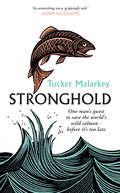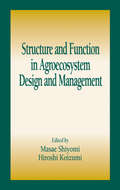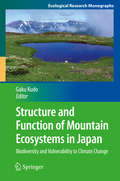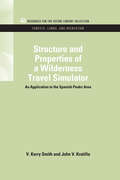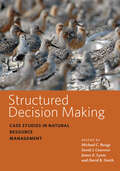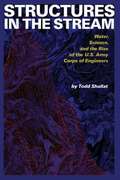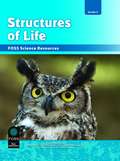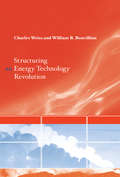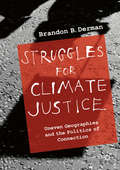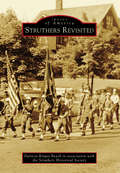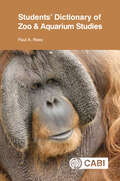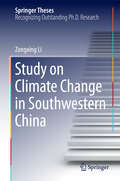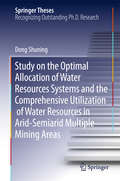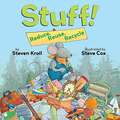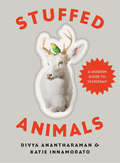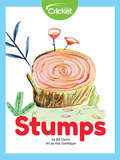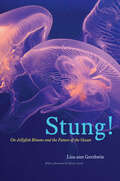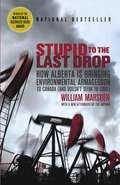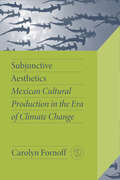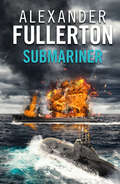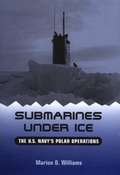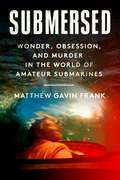- Table View
- List View
Stronghold: One man's quest to save the world's wild salmon - before it's too late
by Tucker MalarkeyStronghold is Tucker Malarkey’s enthralling account of an unlikely visionary, Guido Rahr, and his crusade to protect the world’s last bastion of wild salmon. One of the most determined creatures on earth, salmon have succeeded in returning from the sea to their birth rivers to spawn for hundreds of thousands of years – no matter what the obstacles. But our steady incursions into their habitats mean increasingly few are making it, pushing these fish to near extinction. In this improbable and inspiring story, we follow Guido on a wild and, at times, dangerous adventure from Oregon to Alaska, and then to one of the world’s last remaining wildernesses, in the Russian Far East. Along the way, Guido contends with scientists, conservationists, Russian oligarchs and corrupt officials – and befriends some unexpected allies – in an attempt to secure a stronghold for the endangered salmon, an extraordinary keystone of our ecosystem whose demise would reverberate across the planet. This book is a remarkable work of natural history, a clarion call for a sustainable future and a riveting insight into a fish whose future is closely linked to our own. p.p1 {margin: 0.0px 0.0px 0.0px 0.0px; font: 12.0px 'Adobe Garamond Pro'} p.p2 {margin: 0.0px 0.0px 0.0px 0.0px; font: 12.0px 'Adobe Garamond Pro'; min-height: 14.0px}
Structure and Function in Agroecosystem Design and Management (Advances in Agroecology)
by Masae Shiyomi Hiroshi KoizumiStructure and Function in Agroecosystem Design and Management presents an advanced discussion of the need to design agricultural systems that 1) increase reliance on biological interactions in agroecosystems as a means of decreasing dependence on the use of large quantities of agrochemicals and the consumption of fossil fuel energy and 2) continue
Structure and Function of Mountain Ecosystems in Japan
by Gaku KudoThe purpose of this book is to summarize new insights on the structure and function of mountain ecosystems and to present evidence and perspectives on the impact of climate change on biodiversity. This volume describes overall features of high-mountain ecosystems in Japan, which are characterized by clear seasonality and snow-thawing dynamics. Individual chapters cover a variety of unique topics, namely, vegetation dynamics along elevations, the physiological function of alpine plants, the structure of flowering phenology, plant-pollinator interactions, the geographical pattern of coniferous forests, terrestrial-aquatic linkage in carbon dynamics, and the community structure of bacteria in mountain lake systems. High-mountain ecosystems are characterized by unique flora and fauna, including many endemic and rare species. On the other hand, the systems are extremely vulnerable to environmental change. The biodiversity is maintained by the existence of spatiotemporally heterogeneous habitats along environmental gradients, such as elevation and snowmelt time. Understanding the structure and function of mountain ecosystems is crucial for the conservation of mountain biodiversity and the prediction of the climate change impacts. The diverse studies and integrated synthesis presented in this book provide readers with a holistic view of mountain ecosystems. It is a recommended read for anyone interested in mountain ecosystems and alpine plants, including undergraduate and graduate students studying ecology, field workers involved in conservational activity in mountains, policymakers planning ecosystem management of protected areas, and researchers of general ecology. In particular, this book will be of interest to ecologists of countries who are not familiar with Japanese mountain ecosystems, which are characterized by humid summers, cold winters, and the snowiest climate in the world.
Structure and Properties of a Wilderness Travel Simulator: An Application to the Spanish Peaks Area (RFF Forests, Lands, and Recreation Set)
by John V. Krutilla V. Kerry SmithFirst Published in 2011. Routledge is an imprint of Taylor & Francis, an informa company.
Structured Decision Making: Case Studies in Natural Resource Management (Wildlife Management and Conservation)
by David R. SmithProvides and analyzes real examples of how structured decision making (SDM) can help solve complex problems involving natural resources.When faced with complicated, potentially controversial decisions that affect our environment, many resource management agencies have come to realize the value of structured decision making (SDM)—the systematic use of principles and tools of decision analysis. Few professionals, however, have extensive experience implementing SDM. Structured Decision Making provides key information to both current adopters of the method and those who are deploying it for the first time by demonstrating the formal use of decision analysis to support difficult, real-world natural resource management decisions. Drawing on case studies from multiple public agencies in the United States, Canada, Australia, and Mauritius, the editors present an overview of decision analysis, a classification of decision types, and a catalog of decision analysis methods. Dozens of detailed charts and maps help contextualize the material. These case studies examine a rich variety of topics, including• keeping forest birds free from disease• conserving imperiled freshwater mussels• managing water for oil sands mining• dealing with coastal wetlands in the face of sea-level rise• designing networks for prairie-dependent taxa• combatting invasive alpine shrubs• managing vernal pool habitats for obligate amphibian species • and much moreAimed at decision makers tackling natural resource challenges in government agencies around the world, as well as advanced undergraduate and graduate students preparing to work in natural resource management, Structured Decision Making shows how SDM can be implemented to achieve optimal outcomes that integrate social values and scientific understanding.Contributors: Taber D. Allison, Larissa L. Bailey, Ellen A. Bean, Clint W. Boal, Gregory Breese, Stefano Canessa, Jean Fitts Cochrane, Sarah J. Converse, Cami S. Dixon, John G. Ewen, Christelle Ferrière, Jill J. Gannon, Beth Gardner, Adam W. Green, Justin A. Gude, Victoria M. Hunt, Kevin S. Kalasz, Melinda G. Knutson, Jim Kraus, Graham Long, Eric V. Lonsdorf, James E. Lyons, Conor P. McGowan, Sarah E. McRae, Michael S. Mitchell, Clinton T. Moore, Joslin L. Moore, Steven Morey, Dan W. Ohlson, Charlie Pascoe, Andrew Paul, Eben H. Paxton, Lori B. Pruitt, Michael C. Runge, Sarah N. Sells, Terry L. Shaffer, Stephanie Slade, David R. Smith, Jennifer A. Szymanski, Terry Walshe, Nicolas Zuël
Structures in the Stream: Water, Science, and the Rise of the U.S. Army Corps of Engineers
by Todd ShallatAs the Mississippi and other midwestern rivers inundated town after town during the summer of 1993, concerned and angry citizens questioned whether the very technologies and structures intended to "tame" the rivers did not, in fact, increase the severity of the floods. Much of the controversy swirled around the apparent culpability of the U. S. Army Corps of Engineers, the builder of many of the flood control systems that failed. In this book, Todd Shallat examines the turbulent first century of the dam and canal building Corps and follows the agency's rise from European antecedents through the boom years of river development after the American Civil War. Combining extensive research with a lively style, Shallat tells the story of monumental construction and engineering fiascoes, public service and public corruption, and the rise of science and the army expert as agents of the state. More than an institutional history, Structures in the Stream offers significant insights into American society, which has alternately supported the public works projects that are a legacy of our French heritage and opposed them based on the democratic, individualist tradition inherited from Britain. It will be important reading for a wide audience in environmental, military, and scientific history, policy studies, and American cultural history.
Structures of Life (FOSS Science Resources)
by Delta Education<p>FOSS Science Resources is a book of original readings developed to accompany each module. The readings are referred to as articles in the Investigations Guide. Students read the articles in the book as they progress through the module. <p>The articles cover a specific concept usually after that concept has been introduced in an active investigation. The articles in FOSS Science Resources and the discussion questions provided in the Investigations Guide help students make connections to the science concepts introduced and explored during the active investigations. Concept development is most effective when students are allowed to experience organisms, objects, and phenomena firsthand before engaging the concepts in text. The text and illustrations help make connections between what students. </p>
Structuring an Energy Technology Revolution (The\mit Press Ser.)
by William B. Bonvillian Charles WeissAn argument for a major federal program to stimulate innovation in energy technology and a proposal for a policy approach to implement it.America is addicted to fossil fuels, and the environmental and geopolitical costs are mounting. A public-private program—at an expanded scale—to stimulate innovation in energy policy seems essential. In Structuring an Energy Technology Revolution, Charles Weiss and William Bonvillian make the case for just such a program. Their proposal backs measures to stimulate private investment in new technology, within a revamped energy innovation system. It would encourage a broad range of innovations that would give policymakers a variety of technological options over the long implementation period and at the huge scale required, faster than could be accomplished by market forces alone. Even if the nation can't make progress at this time on pricing carbon, a technology strategy remains critical and can go ahead now.Strong leadership and public support will be needed to resist the pressure of entrenched interests against putting new technology pathways into practice in the complex and established energy sector. This book has helped start the process.
Struggles for Climate Justice: Uneven Geographies and the Politics of Connection
by Brandon Barclay DermanThis book provides an accessible but intellectually rigorous introduction to the global social movement for ‘climate justice’ and addresses the socially uneven consequences of anthropogenic climate change.Deploying relational understandings of nature-society, space, and power, Brandon Derman shows that climate change has been co-produced with social inequality. Mismatching levels of responsibility and vulnerability, and institutions that emerged in tandem with those disproportionalities compose the terrain on which NGOs and social movements now contest climate injustice in a wide-ranging “politics of connection.” Case-based chapters explore the defining commitments of affected and allied communities, and how they have shaped specific struggles mobilizing human rights, international treaties, transnational activist forums, national and local constituencies, and broad-based demonstrations. Derman synthesizes these cases and similar efforts across the globe to identify and explore crosscutting themes in climate justice politics as well as the opportunities and dilemmas facing advocates and activists, and those who would ally with them going forward. How should we understand campaigns for climate justice? What do these initiatives share, and what differentiates them? What, in fact, does “climate justice” mean in these contexts? And what do the framing and progression of such efforts in different settings suggest about the broader conditions that produce and sustain climate injustice, how those conditions could be unmade, and what might take their place? Struggles for Climate Justice approaches these questions from an interdisciplinary perspective accessible to graduate and advanced undergraduate students as well as scholars of geography, social movements, environmental politics, policy, and socio-legal studies.
Struthers Revisited (Images of America)
by Patricia Ringos Beach Struthers Historical SocietyWhat more is there to say about Struthers that was not said in Images of America: Struthers, published in 2008? It turns out there is plenty. Images of America: Struthers Revisited features the people and places that filled this northeastern Ohio town in the 1900s. Through the growth and decline of the steel industry, the town prospered and adapted. Children grew up, marriages occurred, and people died; however, as anyone affiliated with Struthers knows, they could not be buried in the "city without a cemetery." This collection of images illustrates stories of accomplishment, struggle, and everyday life. Photographs of schools, churches, small grocery stores, businesses, eateries, parks, and playgrounds will transport readers to a time that is both familiar and historical. This walk down memory lane is for all ages. It is for those who reside in Struthers and those who used to live there and love to visit.
Students' Dictionary of Zoo and Aquarium Studies
by Dr Paul ReesThis Students' Dictionary of Zoo and Aquarium Studies contains over 5,000 terms (illustrated by 88 figures) used in zoos, aquariums, safari parks, birds of prey centres, petting zoos, animal rescue centres and other facilities that make up the 'zoo industry'. It covers a wide range of topics including animal behaviour, animal husbandry, animal welfare, ecology, law, taxonomy, classification, nutrition, parasitology, physiology, reproduction, experimental design, statistics, veterinary science, disease, visitor studies, water management, wildlife conservation and zoo design and architecture. It should be of great interest to those studying zoo biology, animal management, veterinary science and related subjects along with zookeepers and aquarists in the early stages of their careers. Dr Paul Rees has a long-standing interest in animals and in zoos. He has taught a wide range of subjects including ecology, animal behaviour, zoo biology, and wildlife and zoo law. While lecturing at the University of Salford he created the first undergraduate programme in Wildlife Conservation and Zoo Biology in the United Kingdom and over a period of some 20 years was an external examiner for BSc and MSc programmes in zoo biology and wildlife conservation at the Universities of Edinburgh, Chester, Staffordshire, Wolverhampton, Gloucestershire and Nottingham Trent University. Dr Rees has published research on the large mammal fauna of Ngorongoro Crater, Tanzania, the ecology and behaviour of elephants and cheetahs living in zoos, and the laws concerning wildlife reintroductions and the regulation of zoos.
Studies in Environment and History: Across Forest, Steppe, and Mountain
by David A. BelloIn this book, David Bello offers a new and radical interpretation of how China's last dynasty, the Qing (1644–1911), relied on the interrelationship between ecology and ethnicity to incorporate the country's far-flung borderlands into the dynasty's expanding empire. The dynasty tried to manage the sustainable survival and compatibility of discrete borderland ethnic regimes in Manchuria, Inner Mongolia, and Yunnan within a corporatist 'Han Chinese' imperial political order. This unprecedented imperial unification resulted in the great human and ecological diversity that exists today. Using natural science literature in conjunction with under-utilized and new sources in the Manchu language, Bello demonstrates how Qing expansion and consolidation of empire was dependent on a precise and intense manipulation of regional environmental relationships.
Studies in Environment and History: Empire of Timber
by Erik LoomisThe battles to protect ancient forests and spotted owls in the Northwest splashed across the evening news in the 1980s and early 1990s. Empire of Timber re-examines this history to demonstrate that workers used their unions to fight for a healthy workplace environment and sustainable logging practices that would allow themselves and future generations the chance to both work and play in the forests. Examining labor organizations from the Industrial Workers of the World in the 1910s to unions in the 1980s, Empire of Timber shows that conventional narratives of workers opposing environmental protection are far too simplistic and often ignore the long histories of natural resource industry workers attempting to protect their health and their futures from the impact of industrial logging. Today, when workers fear that environmental restrictions threaten their jobs, learning the history of alliances between unions and environmentalists can build those conversations in the present.
Studies in Environment and History: Waste into Weapons
by Peter ThorsheimDuring the Second World War, the United Kingdom faced severe shortages of essential raw materials. To keep its armaments factories running, the British government enlisted millions of people in efforts to recycle a wide range of materials for use in munitions production. Recycling not only supplied British munitions factories with much-needed raw materials - it also played a key role in the efforts of the British government to maintain the morale of its citizens, to secure billions of dollars in Lend-Lease aid from the United States, and to uncover foreign intelligence. However, Britain's wartime recycling campaign came at a cost: it consumed items that would never have been destroyed under normal circumstances, including significant parts of the nation's cultural heritage. Based on extensive archival research, Peter Thorsheim examines the relationship between armaments production, civil liberties, cultural preservation, and diplomacy, making Waste into Weapons the first in-depth history of twentieth-century recycling in Britain.
Study on Climate Change in Southwestern China
by Zongxing LiThis thesis confirms many changes, including sharp temperature rise, interannual variability of precipitation, extreme climate events and significant decreases of sunshine duration and wind speed in southwestern China, and systemically explores the action mechanism between large-scale atmospheric circulation systems, the complicated topography, human activities and regional climate changes. This study also analyzes the response of glaciers to climate change so that on the one hand it clearly reflects the relationship between glacier morphologic changes and climate change; on the other, it reveals the mechanism of action of climate warming as a balance between energy and matter. The achievements of this study reflect a significant contribution to the body of research on the response of climate in cold regions, glaciers and human activities to a global change against the background of the typical monsoon climate, and have provided scientific basis for predictions, countermeasures against disasters from extreme weather, utilization of water and the establishment of counterplans to slow and adapt to climate change. Zongxing Li works at the Cold and Arid Region Environmental and Engineering Research Institute, Chinese Academy of Sciences, China.
Study on the Optimal Allocation of Water Resources Systems and the Comprehensive Utilization of Water Resources in Arid-Semiarid Multiple Mining Areas
by Dong ShuningArid-semiarid regions have suffered from sharp conflicts among water resource utilization, mining, and the environmental protection. Sustainable development in these regions requires a close coordination between economy, society and the environment. Based on systematic hydrogeological investigations, laboratory and in-situ tests, and application of innovative methodologies including theoretical analysis modeling and prediction to study water resource distribution (including surface water, groundwater, mine water and coal mine domestic water) in mining areas, this dissertation provides detailed analysis of the current situation and trend of water uses in domestic supply, agriculture and industry. It evaluates the status development and utilization, evolution trend, exploitation and utilization potential of water resources in Shen-Dong Coal Mine area, one of China's extra-large coal bases. Incorporated with the long and intermediate terms' development strategies of this area, the dissertation lays out a scientific allocation scheme of water resources in different hydrological years and proposes a planning mode of water resources development and utilization and a technical scheme for comprehensive water resources utilization to provide technical supports for the optimal allocation, rational exploitation, comprehensive utilization and scientific management of water resources. This dissertation is one of the best in Chang'an University because of the volume of reliable data, defensible scientific analysis, and world significance of the research results.
Stuff!: Reduce, Reuse, Recycle
by Steven KrollPinch is a pack rat who does not want to give up the possessions that are cluttering his house, but when he finally is persuaded to sell them at a neighborhood tag sale, he discovers the beauty of recycling. Includes tips on "reducing, reusing, and recycling."
Stuffed Animals: A Modern Guide to Taxidermy
by Divya Anantharaman Katie InnamoratoA quirky, timely, and disturbingly beautiful how-to taxidermy guide, emphasizing ethical sourcing and personal expression Whether inspiration came from an exhibition at an edgy art gallery, a visit to the Natural History Museum, or the sight of your crazy uncle’s jackalope, more and more people are opening up to the fun and wonder of taxidermy. A mix of art, science, and a touch of alchemy, taxidermy lets you engage with the natural world in ways most other people don’t. In Stuffed Animals, Divya Anantharaman and Katie Innamorato demystify the practice, shatter the gross stereotypes, and make taxidermy accessible to anyone, anywhere. Committed to ethical and sustainable sourcing, Anantharaman and Innamorato are part of the vanguard of young taxidermists who bring a sense of fun and experimentation to this old-school hobby. In their sold-out classes in Brooklyn, they teach hundreds of taxidermy novices how to create mantle-worthy pieces out of small birds and mammals. Both a helpful how-to manual and a strangely captivating gift book, Stuffed Animals is the definitive guide to a growing movement.
Stumps
by Ana Sanfelippo Bill CairnsA tree’s rings can tell us many things about its long life–whether it was healthy, or unhealthy, if it needed rain or if its wide rings show it grew healthy and strong. Through poetry, this story shares the life of a tree and how special these giant plants really are! Find a stump and count the rings to listen to a tree’s story. Will the tree you pick be healthy? How will you know?
Stung!: On Jellyfish Blooms and the Future of the Ocean
by Lisa-ann Gershwin“The world of jellyfish is brought alive as you never imagined it could be by Lisa-ann Gershwin in this engaging, gripping, and often funny book.” —Callum Roberts, author of The Ocean of LifeAs our oceans become increasingly inhospitable to life, there is one creature that is thriving in this seasick environment: the beautiful, dangerous, and now incredibly numerous jellyfish. As foremost jellyfish expert Lisa-ann Gershwin describes in Stung!, the jellyfish population bloom is highly indicative of the tragic state of the world’s ocean waters, while also revealing the incredible tenacity of these remarkable creatures.Despite their often dazzling appearance, jellyfish are simple creatures with simple needs: namely, fewer predators and competitors, warmer waters to encourage rapid growth, and more places for their larvae to settle and grow. In general, oceans that are less favorable to fish are more favorable to jellyfish, and these are the very conditions that we are creating through mechanized trawling, habitat degradation, coastal construction, pollution, and climate change.Despite their role as harbingers of marine destruction, jellyfish are truly enthralling creatures in their own right, and in Stung!, Gershwin tells stories of jellyfish both attractive and deadly while illuminating many interesting and unusual facts about their behaviors and environmental adaptations. She takes readers back to the Proterozoic era, when jellyfish were the top predator in the marine ecosystem—at a time when there were no fish, no mammals, and no turtles; and she explores the role jellies have as middlemen of destruction, moving swiftly into vulnerable ecosystems. The story of the jellyfish, as Gershwin makes clear, is also the story of the world’s oceans, and Stung! provides a unique and urgent look at their inseparable histories—and future.
Stupid to the Last Drop: How Alberta Is Bringing Environmental Armageddon to Canada (and Doesn't Seem to Care)
by William MarsdenA bestselling investigative journalist takes a tour of the Alberta oil and gas industry, revealing how Canada's richest province is squandering our chance for a sustainable future.In its desperate search for oil and gas riches, Alberta is destroying itself. As the world teeters on the edge of catastrophic climate change, Alberta plunges ahead with uncontrolled development of its fossil fuels, levelling its northern Boreal forest to get at the oil sands, and carpet-bombing its southern half with tens of thousands of gas wells. In so doing, it is running out of water, destroying its range land, wiping out its forests and wildlife and spewing huge amounts of greenhouse gases into the atmosphere, adding to global warming at a rate that is unrivalled in Canada or almost anywhere else in the world. It's digging, drilling and blasting its way to oblivion, becoming the ultimate symbol of Canada's - and the world's - pathological will to self-destruct.Nowhere has the world seen such colossal environmental destruction as is being wreaked on Alberta. At one point the province even went so far as to consider a scientist's idea of nuking its underbelly to get at the tar sands. Stupid to the Last Drop looks at the increasingly violent geopolitical forces that are gathering as the world's gas and oil dwindle and the Age of Oil begins its inevitable slide towards oblivion. As Canadians deplete their energy reserves, selling them off to Americans at bargain-basement prices, no thought is given to conservation or the long-term needs of the nation.In this powerful polemic, William Marsden journeys across the heart of a province seized by the destructive forces of greed, power and the energy business, and envisions a very bleak future.From the Hardcover edition.
Subjunctive Aesthetics: Mexican Cultural Production in the Era of Climate Change (Critical Mexican Studies)
by Carolyn FornoffDuring the twenty-first century, Mexico has escalated extractive concessions at the same time that it has positioned itself as an international leader in the fight against climate change. Cultural production emergent from this contradiction frames this impasse as a crisis of imagination. Subjunctive Aesthetics studies how contemporary writers, filmmakers, and visual artists grapple with the threat that climate change and extractivist policies pose to Mexico's present and future. It explores how artists rise to the challenge of envisioning alternative forms of territoriality (ways of being in relation to the environment) through strategies ranging from rewriting to counterfactual speculation. Whereas ecocritical studies have often focused on art's evidentiary role—its ability to visualize and prove the urgency of environmental damage—author Carolyn Fornoff argues that what unites the artists under consideration is their use of more hypothetical, uncertain representational modes, or "subjunctive aesthetics." In English, the subjunctive is a grammatical mode that articulates the imagined, desired, and possible. In the Spanish language, it is even more widely used to express doubts, denials, value judgments, and emotions. Each chapter of Subjunctive Aesthetics takes up one of these modalities to examine how Mexican artists, writers, and filmmakers activate approaches to the planet not just as it is, but as it could be or should be.
Submariner
by Alexander FullertonAn epic Second World War adventure from the author of the Nicholas Everard naval thrillers, who &“recreates [life at sea] with authenticity and vigor&” (Historical Novel Society). As captain of the submarine Ursa, Lieutenant Mike Nicholson&’s mission is to disrupt the flow of war supplies to Rommel&’s Afrika Korps. Although Ursa is small, slow and often out-gunned, she succeeds, on her seventeenth Mediterranean cruise, in sinking a German tank-transporter. That triumph makes Mike top of the league—he has now sunk more tonnage than any of his contemporaries. Promotion to Lieutenant-Commander, at the age of twenty-eight, is on the cards. All he has to do is adhere to two rules: stay alive, and keep his nose clean . . . Submariner is a gripping Second World War naval thriller that will appeal to fans of Douglas Reeman and Jack Higgins. Praise for the writing of Alexander Fullerton &“His action passages are superb, and he never puts a period foot wrong.&” —The Observer &“You don&’t read a novel by Alexander Fullerton. You LIVE it.&” —South Wales Echo &“The research is unimpeachable and the scent of battle quite overpowering.&” —The Sunday Times
Submarines under Ice: The U.S. Navy's Polar Operations
by Marion D. WilliamsThe author beautifully depicts the 1931 submarine expedition of Sir Hubert Wilkins to explore the Arctic Ocean. The book also shows the rapid advance of science and technology in submarines.
Submersed: Wonder, Obsession, and Murder in the World of Amateur Submarines
by Matthew Gavin FrankAn exquisite, lyrical foray into the world of deep-sea divers, the obsession and madness that oceans inspire in us, and the story of submarine inventor Peter Madsen's murder of journalist Kim Wall—a captivating blend of literary prose, science writing, and true crime"[A] thrilling study of an obsession—to sink below the surface, to depths both metaphoric and in fact. Full of wild characters and strange histories, by the end we are convinced, in no small part by the beauty of [Frank's] language, that this is one of the most important stories ever told."—Nick Flynn, author of This Is the Night Our House Will Catch FireSubmersed begins with an investigation into the beguiling subculture of DIY submersible obsessives: men and women—but mostly men—who are so compelled to sink into the deep sea that they become amateur backyard submarine-builders. Should they succeed in fashioning a craft in their garage or driveway and set sail, they do so at great personal risk—as the 2023 fatal implosion of Stockton Rush's much more highly funded submarine, Titan, proved to the world.Matthew Gavin Frank explores the origins of the human compulsion to sink to depth, from the diving bells of Aristotle and Alexander the Great to the Confederate H. L. Hunley, which became the first submersible to sink an enemy warship before itself being sunk during the Civil War. The deeper he plunges, however, the more the obsession seems to dovetail with more threatening traits. Following the grisly murder of journalist Kim Wall at the hands of eccentric entrepreneur Peter Madsen aboard his DIY midget submarine, Frank finds himself reckoning with obsession's darkest extremes.Weaving together elements of true crime, the strange history of the submarine, the mythology of the deep sea, and the physical and mental side effects of sinking to great depth, Frank attempts to get to the bottom of this niche compulsion to chase the extreme in our planet&’s bodies of water and in our own bodies. What he comes to discover, and interrogate, are the odd and unexpected overlaps between the unquenchable human desire to descend into deep water, and a penchant for unspeakable violence.
